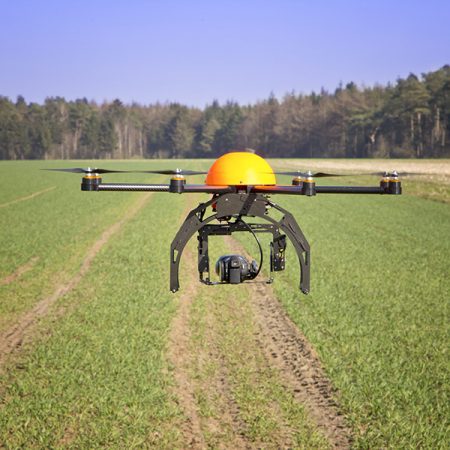June 24, 2017 – In its most recent United Nations report on food and agriculture, it highlights the need for humanity to meet increases in food demand because of growing world population. By 2050 the forecasts point to a 50% increase in agricultural production.
For mechanized agriculture in Europe and North America, knowledge intensive practices are already in place producing very high yields despite an overall changing climate and extreme weather events. But in the Developing World, particularly in Asia, where farming is divided among small holdings, knowledge intensive practices are just beginning. This is data-enabled agriculture using distributed field sensors, drones to provide constant images and readouts of important data such as soil moisture, field temperature, and evapotranspiration, wireless communication to mobile and tablet applications that provide small farmers with an accurate picture of their crops, and enhanced satellite imaging to further help with planning. Knowledge-intensive agriculture is also accepting of genetically modified crops which for many Developing World countries may prove to be the difference between feast or famine.
Mobile phones have become a small farmer’s best tool because it key to acquiring knowledge not just about growing crops but also marketing them. With 300 million small farms in Asia alone spread over a wide range of biomes and geography, they face diverse farming conditions with challenges that can be collectively addressed through shared knowledge distributed through the Internet. This democratizing of knowledge is the most significant positive disrupter to the world of agribusiness.
The same is true for Africa where small farms are beginning to see the benefits of knowledge distribution through the Internet. Whether a herdsman in Kenya trying to find out the latest cost of feed, to corn and cassava planters checking on potential threats to their crops, or the latest information on the spread of armyworms and new pesticide controls to keep them at bay, the new knowledge revolution in agriculture represents the best hope for a world heading for a population of 10 billion by mid-century.
Knowledge-intensive farming has also come to cities in the Developed World bringing food producers closer to urban consumers. City farms, whether on rooftops or vertically placed in fully integrated indoor environments, grow crops under far more controlled conditions than farms in the country. On rooftops, crops receive the consistent application of fertilizers and water to ensure healthy yields. In indoor farms, the light provided is artificial, as is the temperature and even the atmosphere. In some vertical indoor farms, carbon dioxide is added to the air to speed up crop growth and improve yields. Asian states and cities have seen more than 100 indoor farms launched in the last few years in places like Singapore, Korea, and Japan. And vertical urban farming is catching on in Europe and North America as well.
A more controversial aspect of knowledge-intensive agriculture is related to the distribution of genetically modified (GMO) seeds for the most commonly grown staple crops. The demonization of this very important technological advance because of the negative image of Monsanto and its marketing practices, has delayed acceptance of GMO crops. And yet, GMO in conjunction with other knowledge-intensive technologies and practices represents the best bet for a sustainable food supply as the world faces the combination of population growth and unpredictable extreme weather from anthropogenic climate change in this century.
It is indeed unfortunate that many in the environmental movement and scientific community, when it comes to GMO science, reserve judgment or condemn the technology. Yet they accept humanities manipulation of plants prior to the arrival of GMO technology through other means. Selective breeding alters plant genetics to create new crops. The difference between GMO and selective breeding is timing. Selective breeding can take years to produce a stable new food source. GMO can achieve the same result in but a fraction of the time. And current GMO practices involve significant testing of the end results in animal and other studies to ensure restructuring at the submolecular level doesn’t produce unintended consequences.
Food security should be the priority. And using knowledge-intensive farming practices and 21st-century technologies will be critical to meeting the needs of humanity at the mid-century and beyond.
















